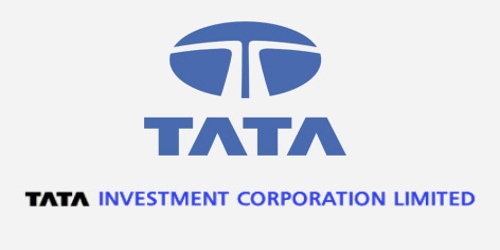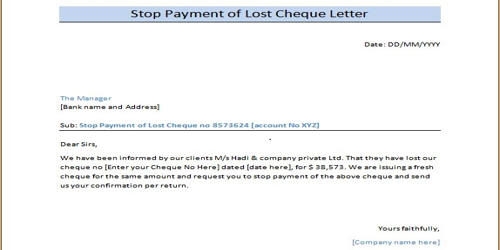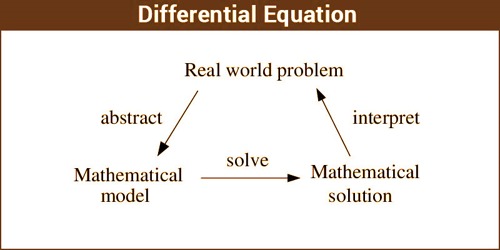Financial and critical analysis of Vendors Management in
Banglalink Telecommunication LTD
Banglalink is the second largest cellular provider in Bangladesh after Grameenphone. In September, 2004, Orascom Telecom Holdings purchased 100% of the shares of Sheba Telecom (PVT.)Limited (Sheba).Afterwards it was rebranded and launched its services under the ‘Banglalink’ brand on February 10, 2005. When Banglalink entered the Bangladesh Telecommunication Industry in February 2005, the scenario changed overnight with mobile telephony becoming an extremely useful and affordable communication tool for people across all segments with innovative and attractive products and services targeting the different market segments, aggressive improvements of network quality and dedicated customer care; and effective communication that emotionally connected customers with Banglalink. The objective of the company is to ensure telecom facilities for all people of Bangladesh with minimum cost. Therefore, they are trying to minimize this cost by improving their supply chain department by implanting new strategies to overcome their faults. On this process they have opened a whole new department for just to improve their contract management system inside the company as well as to maintain a good relationship with their vendors by ensuring that both the product quality and delivery date was maintained while receiving the goods from their vendors. Here, the report will discuss about their vendor management system while focusing on the contract management department to show how they have utilizing their resources to ensure that their vendors not delaying in delivering their goods, even if they do so, how much penalty Banglalink is actually getting due to their vendors mismanagements in delivering the goods on time. Besides, a SWOT analysis have been provided to show their opportunities and threads while recommending them the changes they can think of while working with their vendors in Future. All the information used for this report was approximate.
Introduction:
The telecom sector of Bangladesh, after its liberalization began with small steps in 1989 with the issuance of a license to a private operator for the provision of inter alia cellular mobile service to compete with the previous monopoly provider of telecommunications services the BTRC (Bangladesh Telecommunication Regulatory Commission), has since never looked back. Significant changes in the number of fixed and mobile services deployed in Bangladesh occurred in the late 1990s and the number of services in operation has subsequently grown exponentially in recent years.
The incentives both from government and public sectors have helped to grow this sector and it is now one of the biggest sectors of Bangladesh. As a populous country, its huge market has attracted many foreign investors to invest in this sector- and Banglalink is only the most recent one to step into the market.
The project was about how efficiently vendors are being managed by the company and by this, how it has an important effect on finance and profitability of Banglalink. Much of the work has been based on first hand experiences and data was collected from the financial report are also looked and studied upon with much importance.
Background of the Study:
Growth of Customers:
Bangladesh, with its burgeoning population, has an enormous need for telecommunication services. Such high population means that the telecommunication sector can really play a big role to boost and improve the economy and social level of people. This has been further brought to fore through the emergence of cellular phones, that has quite drastically changed the lives of businesses and individuals alike.
The rise in the number of village people changing their professions and occupations has meant that the importance of mobiles far supersede the requirements of only the affluent and well-offs. Following the government’s decision of deregulating the telecommunication sector, the overall efficiency of business has increased tremendously- a feat that was previously missing since the sector functioned only as a state monopoly since 1980.
The telecom industry, only one of the technical industries to have benefitted from the introduction growing business needs. This is one of those industries that has intense competition among the players in the market and the fact still remains that majority of the players in the market are multinational subsidiaries- with vast finances at disposal. The Bangladeshi people’s plan intent of caring more than one subscription (in most cases, catering to subscription from different service providers), coupled with huge population (roughly around 200 million) have always given the service providers a strong base to provide for. While the early years saw the domination of pacific Bangladesh telecom Limited (Citycell), primarily because of the failure of Sheba Telecom to gain market share because of poor infrastructure, customers were denied of benefits as Citycell ran a monopoly market, with the sole intention of profit maximization. However, the introduction of Grameenphone and Aktel into the scene meant that call rate experienced drastic falls- with Grameenphone acquiring a greater market share through improved coverage and better customer service. The introduction of Orascom (which brought off Sheba Telecom) followed soon after and the company was then renamed Banglalink- triggering a price war never seen before in the Bangladesh telecom market. This resulted in huge drop in registration and call rates. December 2004 saw the introduction of Government owned Teletalk BD Ltd. While its slogan to ‘Keep your money in your country’ created some buzz, it waned soon after.
The company was the first to give BTTB (now BTCL) facility to its subscribers. Later, Warid Telecommunication International LLC, an AbuDhabi based consortium, entered the marketthe sixth entrant- and since its introduction, it has sold a majority 70% stake in the company to India’s BharatiAirtel Limited. A look at the competitors in the market will reveal the following companies.
Company Overview:Banglalink Digital Communication Ltd.
Banglalink Digital communication Ltd is fully owned by Telecom ventures Ltd of Malta which is a fully owned subsidiary of global telecom holding s.a.e (formerly known as Orascom Telecom Holding s.a.e). Between Vimplecom Ltd and wind telecom s.p.a, Vimplecom owned 51.92% shares of global telecom holdings in April 2011. Vimple com is one of the world’s largest integrated telecom service operators providing voice and data services through a range of traditional and broadband mobile and fixed technologies in Russia, Italy, Ukraine, Kazakhstan, Uzbekistan, Tajikistan, Armenia, Georgia, Kyrgyzstan, Laos, Algeria, Pakistan, Burundi, Zimbabwe, Central African Republic, Canada and
Bangladesh. Vimplecom is headquartered in Amsterdam, the Netherlands and listed as an ad on the New York stock exchange under the symbol ‘VIP’
Before the inception of Banglalink, Sheba Telecom (Pvt.) Ltd. was granted license in 1989 to operate in the rural areas of 199 upazilas. Later it obtained GSM license in 1996 to extent its business to cellular mobile, radio telephone services. It launched operation in the last quarter of 1997 as a Bangladesh-Malaysia joint venture.
In July, 2004, it was reported that Egypt based Orascom Telecom is set to purchase the Malaysian stakes in Sheba Telecom through a hush hush deal, as Sheba had failed to tap the business potential in Bangladesh mainly due to a chronic feud between its Malaysian and Bangladeshi Partners. An agreement was reached with Orascom worth US$25 million was finalized in secret. The pact has been kept secret for legal reasons, considering financial fallout and because of the feud.
Since Banglalink’s launch in February 2005, its impact was felt immediately. Mobile telephony became an affordable option for customers across a wide range of market segments overnight. The success of Banglalink was based on a simple mission ‘bringing mobile telephony to the masses’. With this strategy, Banglalink changed mobile phone status from luxury to a necessity and made a place in the heart of the general people by this positive change in Bangladesh.
‘Change’ that is correctly attributed to Banglalink, became the corporate positioning of Banglalink and was translated in their slogan ‘making a difference’ or ‘din boodle’. The corporate stance of ‘making a difference’ has been reflected in everything Banglalink does. Banglalink attained 1 million subscribers by December 2005and 3 million by October, 2006.
By December, 2007, Banglalink over took Aktel to become the second largest operator in Bangladesh with more than 7.1 million customers. Representing a market share of 25.7%, Banglalink presently has 30 million subscribers as of September 2014. Banglalink’s growth over the preceding years have been fuelled with innovative products and services targeting different market segments, aggressive improvement of network quality and dedicated customer care, extensive distribution network across the country and a strong brand value that has emotionally connected customers with Banglalink.
Specific objective of the report
From the broad objective stated above we can bring out the following specific objective:
- To understand and analyze the contract management process in the Banglalink.
- To identify the strategies & policies for contract management Process.
- To find out their key unique features.
- To analyze the methodology of Contract management Process in a simple way
- To find out their problems through SWOT analysis with effective solution to overcome the limitation.
- To know about the challenges and time loss of their process.
Methodology:
Framework
The whole report has been arranged with four specific parts. Part one named as introduction part which includes the introduction of the about the Banglalink and their competitors. Part two, methodology of the study, limitations and significance of the study are introduced. Part three includes the main project part and part four contains the analysis &conclusion.
Target
The target populations for the study are–
- Internal employees.
- Vendors of the organization.
- Key executives.
Study area:
The study will be conducted within the organization to represent the contract management process ofBanglalink Limited.
Data source:
For the information of the report both primary and secondary sources of data have been collected. But mostly the primary data are used. Primary sources of data consists various data collected by informal interview with the employees.
Secondary sources including several studies on Banglalink Limited of the website publications have been used for this purpose.
Phase of the study:
Data will be collected from different executives, inter employees & company vendors through formal interviews. Besides, several websites publications will be studied as it is a descriptive study of the contract management process with short financial analysis of their improvements through investment and research will be done to see how they have done this so far with this has done. Besides, It is just an analysis of the critical contract management process of the company. This descriptive study includes study includes information collected from the population through informal interviews. The information collected for this topic is objective as they are collected from the company’s internal employees which are very much genuine.
Vendor Management:
This is the most common procedure of any company that is to manage and procure staffing services – temporary, and, in some cases, permanent placement services – as well as outside contract or contingent labor. Like other companies’ Banglalink is also following procedures to maintain a healthy relationship with their vendors as well as to ensure the quality of the service they are getting from their suppliers or vendors (Perelman, 2007). Beside, Vendors are the major part and parcel of any companies that we will try to talk about because they are providing the raw materials or services that companies are required to produce their products or service that they are willing to provide for their global or local customers. This is the reason why Banglalink goes with a process of vendor’s selection in their company before going for any contract.
Vendors selection process in Banglalink:
In the Banglalink they are following 5 easy steps before selecting the vendors for their company (Annual report, 2009). This process is helpful to keep a healthy relationship with their vendors while maintaining their own interests.
Analyze your business requirement
Banglalink first analyze their business before even selecting or searching for their vendors. Sourcing team has been given this responsibility of sourcing vendors for the company. Moreover, they will discuss with the management about what company wants to outsource and the price range they are currently looking from their vendors. Basically, they have to analyses the company requirements before even selecting the vendors.
Search for vendors
After analyzing the business requirements, it become easy for the sourcing team to find a suitable vendors for Banglalink, who can deliver the service/product that the management wish to outsource. At first they compile a list of possible vendors, but the procurement team will only select those vendors that meet their management’s requirement, after researching on suitable vendors’ background, procurement team will have to select a few vendors from them.
Write a request for proposal or request for quotation
After short listing from all those vendors, procurement team asks them to write a request for quotation or request for proposal. The request for proposal should contain sections, such as, submission details, an introduction and executive summary, an overview and background of the business, detailed specifications, assumptions and constraints, terms and conditions and selection criteria.
Evaluating the proposal & selecting the vendor
To begin with, the procurement team conducts a preliminary review of all vendors’ proposals. The next step would be to compare both the business requirements and the vendors’ requirements before selecting the vendors. They have to communicate with the management about their selection to justify their selection before going for any contract with the vendors. Moreover, they have to rank their priorities along with alternatives. Clearly define benchmarks and time constraints. Evaluate the risks and liabilities. Also state the level of confidentiality required. They also need to remember the changes in the requirements before going for the selection. Understanding the difference between what management wants and what the vendors need, from the outsourcing contract, actually help them to create a better strategy.
Creating a contract
Creating a contract is the final step in the Banglalink vendor selection process. After making all the negotiations, the contract management team has to make the contract between Banglalink and the vendors by safeguarding both parties’ interests and also by following up its progress in the future. Procurement team has to give all those selected vendor’s information to the contract management team so that the contract management team can ensure that the contract policies and requirements were followed while selecting those vendors for Banglalink.
Different types of Vendor:
A multinational company like Banglalink uses different sort of vendors who can help them to keep up with their competitors as well as to standardize their services for their consumers (Gartner, 2015). For instance, they have both foreign and local suppliers who are providing them the services and materials that they are required to keep up the competition as for Example “Huwai” is the major foreign suppliers who is providing them with the technical supports to maintain their network capacity and also improve the quality of their voice call servicers. On the other hand they are using BTCL and Mango telecom to provide internet services in Bangladesh. Besides, they are also doing inter-company transition between their parent company and subsidiary companies to upgrade their quality of services. However, they are still not able to get the M2M services which have been used by Vimplecom in Russia to provide network support for their customers. A pie chart has been given to show the percentages of different vendors’ involvements.
However, Banglalink vendor management system has described about the vendors in a different way because their point of view about suppliers was how critical or important they are for the company management. This is why they have divided the suppliers in to three kinds and they are
- Critical
- Regular
- Irregular
Critical vendors are the major part of any company because they are the heart of any company. Without their support company services for the customers can collapse at any time (Gartner, 2015). This is because there is no other option to go for if those vendors stop supplying their goods on time and they are also giving the company the major credit facility for the company. Therefore these vendors are controlled by the top level management to ensure that they are getting the proper support from their company to provide the products on time (Perelman, 2007). Moreover, these are the technical vendors that will provide services from foreign countries to the mother company. Banglalink has some major critical vendors like that and they are
- Huwai Bangladesh Ltd
- Ericson Bangladesh
- Nokia simians Bangladesh Ltd
Regular vendors are the usual vendors where you can find other sources when the normal vendors have failed to give you the support on time. Most of these vendors are from local market because they can be sourced easily and they are always available to connect from the local country. Moreover, there number will be quite high compare to their critical suppliers because they can be outsources from the local market by their sourcing team quite easily.
Regular suppliers help Banglalink to bargain and choose the best product by looking from their product details. Banglalink has only a few umbers of vendors like that and most common names for them are like
- BTCL
- Mango
- Green power
Irregular vendors are those who provide support occasionally like for marketing promotions and making festoons for Banglalink services. Besides, they are not the actual vendors that are used for the daily activities that are done in the Banglalink.
There are some other vendors who provide support in a short time basis but they are not counted as the major vendors according to their supply chain team.
Recently to manage this contracts, Banglalink has established a new department by putting their investments to ensure that this critical vendors are not causing any issues and the time they are providing to their suppliers to deliver their shipments or products are actually reaching them on time. Basically, this department is to go through with the contracts (that banglalink is singing with the vendors) and ensuring that they are not losing their vendors due to any mismanagement.
Contract Management:
Good contract management signifies the administrative activities associated with handling of contract representative, monitoring contract relationship, addressing related problems, incorporating necessary changes or modifications in the contract, ensuring both parties meet each other expectations and actively interacting with the contractor to achieve the contract’s objectives (Elsey, 2007).
Function of contract management:
The functions are- 1) invitation to bid, 2) bid evaluation, 3) the penalty calculation, 4) managing the relationship between vendors and users, 5) monitoring the contract, 6) risk management, 7) legislative and audit compliance, 8) creating a contract which is value for money and 9) maintain probity and transparency (Elsey, 2007).
Contract Management is done in Banglalink:
In Banglalink contract management unit in finance department is a new wing which has been established about a year an ago. Currently in CM unit there are three employees who are working in managing and preparing contracts. The process contract management department is following to prepare a contract for any department is given below:
At first procurement unit issue new contract requisition. In the procurement team every member deals with several vendors and when they fixed the price and other concerning issue with the vendor then procurement team give requisition for a new contract to contract management unit.
Contract management unit gets the requisition from procurement department. After that contract management department validate the requisition as per the contact content checklist where 10-15 checking points available. So for a contract it is very important to have all the require information which is needed to match with the checklist.
If the entire information match with the checklist requirement then contract management unit initiates contract preparation in coordination with Legal, User, and Procurement unit.
Contract management unit validate all the commercial T&Cs, SOW (statement of work), SLA (service level agreement) and ROQ.
In the next step contract management department sends the contract to its important stakeholders like Treasury, Tax, Procurement and user for their approval or validation of the contract.
After all the validation achieved then they follow up with the respective stakeholder to receive the validation and then send the contract to the legal department for internal approval circulation.
Lastly when contract management receives the final contract from Legal which has been signed by all the respective peoples then they provide one copy of contract to the vendor and another copy they keep it as a reference.
By this way contract management unit work in Banglalink.
The main stakeholders in preparing a contract in Banglalink:
In Banglalink in contract management unit the main stakeholders are HR & Admin, Procurement, Legal and Tax. Other department those who are subscriber of the contract are known as user. Moreover user does not need to validate any part of the contract because of this reason user are not stakeholders. Stakeholders are those who need to validate their part in the contract and their approval important for the contract .In Banglalink these four are main stakeholders.
Validates the contract:
In Banglalink in contract management unit they do all the contract related work like managing, preparing everything. Initially all the validation like contract content checklist, all the commercial T&Cs, SOW, SLA and ROQ has done by contract management unit. Other validation like for legal things validation is done by Legal unit, For tax related approval validation is done by Tax division, price related validation done by procurement .So validation of a contract is not only depends on contract management unit but also it is inter related with the stakeholders of contract management unit
Importance of contract and contract management:
Contracts are known as the legal agreement between two parties according to the point of view of English law. However in the business world they are helping the vendors and the customers to maintain their own rights and obligations with the help of this contract. Adding to that, Businesses frequently use contracts to ensure that a certain level of service is maintained or that competing companies do not have access to specific economic resources.
It also ensures manufacturing or production businesses can obtain economic resources at a specific price for a defined time period. Moreover, it specifies the duty of a service contracts by outlining the specific duties of a vendor company and how they will perform in a contractual agreement.
On the other hand, contract management is helping or guiding the whole company to enter into the contract and also to manage the relationship with their vendors on behalf of the user
HR & Admin Procurement Legal and tax department. Moreover, they can maintain the transparency and probity of the contract while managing the relationship between both the parties (Elsey, 2007). Contract management can also help to know the time length of the contact or if there is any penalty cost that can be occurred while avoiding the contract, the contract management team can easily calculate that cost on behalf of the company. Basically, they are the manager of contract management who will make sure that both the company and their vendors are not going beyond their obligations by maintain their own interests (Elsey, 2007).
Types of contracts’ that is done in Banglalink:
Mood of creation: there are two types of contract-
- Express contract- offer and acceptance of a contract which is made in words either expressed orally or in written words are known as express contract. There are two types of express contract- written and oral (business directory, 2014).
- Implied contract- An implied contract is an agreement created by actions of the parties involved, but it is not written or spoken. In this case, there is neither written record nor any actual verbal agreement (business directory, 2014).
Number of parties: there are two types of contract-
- Bilateral- this is a joint arrangement between two parties where each promises to perform an act in exchange for the other party’s act. In this case, two parties are performing promises according to the agreement they have made. A bilateral contract specifies a duty to act in exchange for another party’s duty to act (business directory, 2014).
- Unilateral- In this contract where one party has to fulfill his obligation whereas the other party has already performed his obligation. Basically only one party has to act according to the agreement where other does not.
Mood of enforceability and validity: there are four types o contract-
- Valid contract- a valid contract is enforceable by law because it satisfied all therequirements prescribed by law for the validity of a contract (Ohio, 2014).
- Void contract: a void contract is a one where there is no agreement or any legal binding in the contemplation of law. There is no contract in the eye of law because it missing some fundamental principle of law to form a contract (Ohio, 2014).
- Voidable contract: a contract in which vitiating element is available in the contract is a voidable contract. Reasons that can make a contract voidable include failure by one or both parties to disclose a material fact; a mistake, misrepresentation or fraud etc.
- Unenforceable contract- a contract may be valid in itself but is not capable of being enforce in a court of law because of some technical defects such as absent of writing, registration, stamp or time barred etc. by the law of limitation (Ohio, 2014).
Mode of time of performance: there are two typesExecuted- if all the condition of a contract is performed as soon as possible it is executed contract. Executor- there is an obligation in the contract that it will be performed at the later period of the formation of the contract.
There is also two type’s special contracts- Quasi contract and contingent contract which are special types of contract.
According to the category of contract:
Consultancy contract: it is the contract that typically defines the purpose and duration of the duty to be performed, but not the way in which the task is to be performed by a consultant.
The consultant is usually paid on completion of his duty (Ohio, 2014).
General Service contract: a contract where generally a service is described for forming the contract. Basically particular service aspect is agreed between the service provider and the service user(Ohio, 2014).
Manpower contract: this contract is to gather manpower from third party, where the third party becomes liable for their people and the work that is to be done within the time limit.
Supply contract: Supply contract that establishes the terms of working relationship between a vendor and a customer. They also mention the price and other important pint what should be fixed before starting any contract between them (Ohio, 2014).
Based on payment:
Mark up contract: This is a contract where suppliers get mark up or profit from their customers due to their extra services. For example supplier get extra paid for breakdown of a normal cost for finishing their work within their time limit (Ohio, 2014).
Lumsum contract: A contract under which both customers and vendors agrees to pay a specified amount for completing their duty without requiring a cost breakdown.
Unit contract: Where the customer agrees to pay for each completed unit of work. It is also known as construction contract (Ohio, 2014).
Penalty calculation:
Contract management team is not only maintaining the relationship with the vendors after and before starting the contract, they are also counting the days after finishing the contract whether the vendors were able to fill up all their conditions like delivering the goods on time, product failure, product services etc. They are using Microsoft outlook to calculate the penalty cost when their vendors are failing to deliver the goods on time. However, this calculation is not only to decrease their losses, this is to make sure that heir consumers are not suffering due to their suppliers fault in delivering the goods in Banglalink on time. Therefore, contract management team will track their company contracts to make sure that the products delivery schedule has been maintained by their vendors. Vimple Com has introduced this new department to critically analyze the vendors in Banglalink. For last three years, this department has been successful in tracking out the losses that Banglalink has to go through due their vendors’ mismanagement. Moreover, they are trying to upgrade their system of vendors’ management style in Banglalink. This department’s major policy is to make sure that their critical vendors are not trying to cost them any money due to their late shipments in delivering the goods and whether their vendors’ services were good enough for Banglalink. They have to issue the penalty letter to the vendors to explain that Banglalink will cut off their payments due to their failures in delivering the goods on time. This penalty will be the same amount that their vendors have decided to pay if they fail to deliver the goods in Banglalink.
SWOT Analysis
Strength:
- Disciplined approach to work.
- Good communication with vendors & users.
- Possession of vast area of skills by different personnel.
- Effective and efficient Functional & Operational knowledge in the whole process.
- Dedicated team who has willingness to work long hours.
- Punctuality year 1 year 2 year 3
- Commitment towards service.
- Problem-solving mentality and skills.
Weakness:
- Insufficient manpower or resource constraint in the Contract Management unit.
- Weak influence of Procurement management in the technical aspects of vendors election.
- Bias of Users towards specific vendors ‟leads to weak bargaining power for company
- Inability of Procurement unit in conducting supplier market analysis due to time constraint.
- Lack of planning from user end leading to failure to achieve some objectives.
- Interrupted flow of information.
- Less motivation due to lack of recognition.
- Less Empowerment.
Opportunity
- Focus on process efficiency by Management to facilitate the procurement process
- Increased scopes of work for contract administration.
- Increased companywide control and compliance.
- Development of more efficient ERP system in Banglalink to reduce workload.
- Ongoing development of better coordination and communication with the related parties’ in the procurement process.
Threat
- Presence of too many competitors in the telecommunication sector.
- Unfavorable government policies(e.g. controlled foreign exchange regime) in regard to foreign procurement or import
- Market saturation and growth in telecommunication sector
Recommendation
The management and commercial co-coordinators in the Procurement unit need to be more accountable and responsible for their decisions and activities before starting any contract with the vendors. Gap between management at different levels has to be decreased. Supervisors need to become aware of the status of procurement activities and projects handled by the officers. This will help contract management to have proper information about the vendors and the process will be a little easier for both the parties.
- The number of employees needs to increase in the contract management team to increase their efficiency at work.
- More collaboration is required among the department of supply chain while selecting the vendors for the company.
- More technological efficiency need to be brought for the efficiency of their departments.
- The current structure/organogram of Contract Management needs to be updated to make the department suitable for the age of digital technology.
- Vendor helpdesk should be created to provide guidelines to interested vendors. Suggestion box should be provided for the vendors to know about the changes they want from Banglalink.
- Most vendors need to develop adequate IT infrastructure to keep up with Banglalink and get new types of works, especially in the data business. Modern communication facilities like e-mail usage and constant internet connection should be set up.
- Important personnel of partner organizations like Key account managers should be given easy and quick access to Banglalink offices and premises.
Conclusion
Banglalink delivers the finest class 3G service to its customers in Bangladesh. The operational goal is being achieved through the development of vendors’ management system while focusing on their supply chain departments’ improvement. In Banglalink the contract, procurement, logistical, warehouse & inventory procedures are handled y the Supply chain management department. To procure any products and/ services, the Procurement unit of Bengalink’s supply chain department has to follow a systematic procedure consisting of various steps. In past this department has to face problems and binding while working on their process due to miscommunication with their vendors and support from the other departments. Key challenges specific to different stages are: Lack of knowledge and skill of user department personnel about purchase orders, lack of coordination between different departments in supply chain members and disagreements between vendors and Banglalink about the penalty costs calculations due to delays in shipment and in clearing of goods from ports etc. However, contract management department has actually helped them to improve with that condition and maintain a healthy relationship with their vendors.
However, Recommendation for contract management department is that they need to increase the number of employees in their team and they need to divide their workloads in between their members. Besides, using new technological software for maintain the data up to dates will help them to track down these contracts more efficiently. Moreover, by sharing the price information and vendors payment methods will help contract management team to track down whether there is any vendor to take that money or the company is paying their money to unknown vendors.
As a whole this mentor program has actually helped all of us to improve our skills while changing our perspective about the vendors’ management that we have learned so far from our normal text books. A multinational company like Banglalink has actually helped me to learn this new medium of process while giving me a co-operative environment to work.
















